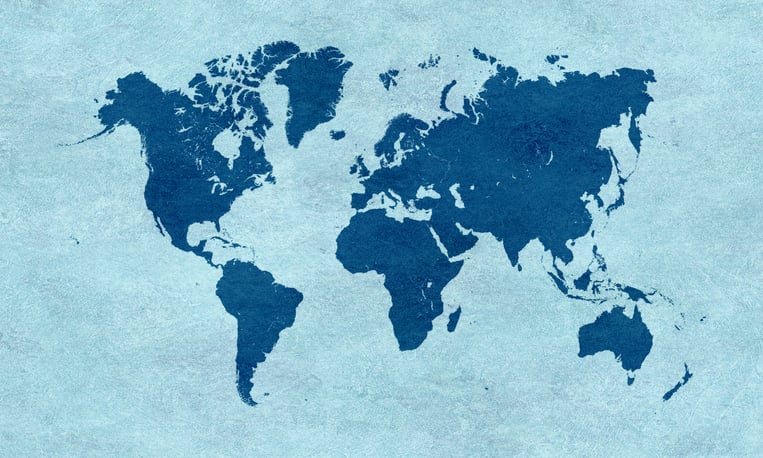The Global Wind Energy Council (GWEC) has released its annual market statistics for 2016, when total global installed wind capacity reached nearly 487 GW.
Led by China, the U.S., Germany and India – with surprisingly strong showings from France, Turkey and the Netherlands – the global market was nonetheless less than 2015’s record total, says GWEC.
“Wind power continues to grow in double digits, but we can’t expect the industry to set a new record every single year,” comments Steve Sawyer, GWEC secretary general. “Chinese installations were an impressive 23,328 MW, although this was less than 2015’s spectacular 30 GW, which was driven by impending feed-in tariff reductions.
“Also, Chinese electricity demand growth is slackening, and the grid is unable to handle the volume of new wind capacity additions, although we expect the market to pick up again in 2017.”
According to GWEC, the Chinese offshore market began what many hope is the sector’s long-awaited takeoff: Following the U.K. and Germany, the country passed Denmark to achieve third place in global offshore rankings.
U.S. wind installations (8,203 MW) were nearly equal to those of 2015’s strong market – in turn, bringing the U.S. total to more than 82 GW, the report says. In addition, as laid out in a recent U.S. Department of Energy report, the U.S. wind industry now employs more than 100,000 people.
GWEC notes that Canada (702 MW) and Mexico (454 MW) posted solid though modest gains.
With 3,612 MW of new installations, India set a new national record; this brings the country’s total to 28,700 MW.
“We have great expectations for the Indian market,” adds Sawyer, “and we look forward to seeing offshore making a contribution in India in the next few years.”
GWEC says Europe had a surprisingly strong year, given the policy uncertainty plaguing the region: It posted modest gains with an annual market of 13,926 MW.
Germany also had another strong year, installing 5,443 MW to bring its total capacity to more than 50 GW – only the third country to reach that milestone. France also had a strong year with more than 1,500 MW, and Turkey broke the 1 GW barrier for the first time, installing 1,387 MW. In addition, with 887 MW, the Netherlands entered the global top 10 in terms of annual market for the first time (most of which was offshore).
“The cost of wind power continues to plummet, and this is particularly the case for the European offshore sector, which has met and exceeded its 2020 price targets by a substantial margin and five years early,” notes Sawyer.
According to GWEC, Brazil once again led the Latin America market, although the country’s political and economic woes resulted in a market that barely cleared 2 GW (2,014 MW) but still pushed the country over the 10 GW mark; it ended the year with 10,740 MW.
Chile posted a record year with 513 MW installed, bringing the country’s total to 1,424 MW, and Uruguay added 365 MW for a year-end total of 1,210 MW. Peru (93 MW), the Dominican Republic (50 MW) and Costa Rica (20 MW) also had significant installations last year. Though Argentina had no new installations in 2016, it now has a solid pipeline of more than 1,400 MW, which will be built out over the next couple of years.
The report notes that Africa was quiet: Only 418 MW was installed in South Africa, whose renewables program is currently being held hostage to a power struggle between the president, his cronies and Eskom on the one hand and the energy regulator, the ministry and the industry on the other, according to GWEC.
Elsewhere, Morocco had a successful auction for 800-plus MW of wind, which will be built out over the coming years, and in Kenya, construction was nearly finished on the Lake Turkana project. However, says GWEC, Egypt’s renewable energy ambitions seem to be stuck for the moment.
The Asia Pacific region was also quiet, with only Australia adding capacity (140 MW), although there are signs of a strong revival in the Australian market.
“Overall, the industry is in pretty good shape,” concludes Sawyer, “with new markets emerging across Africa, Asia and Latin America and the traditional markets in China, the U.S. and Germany continuing to perform well. We look forward to a strong 2017.”
The full report can be found here.




